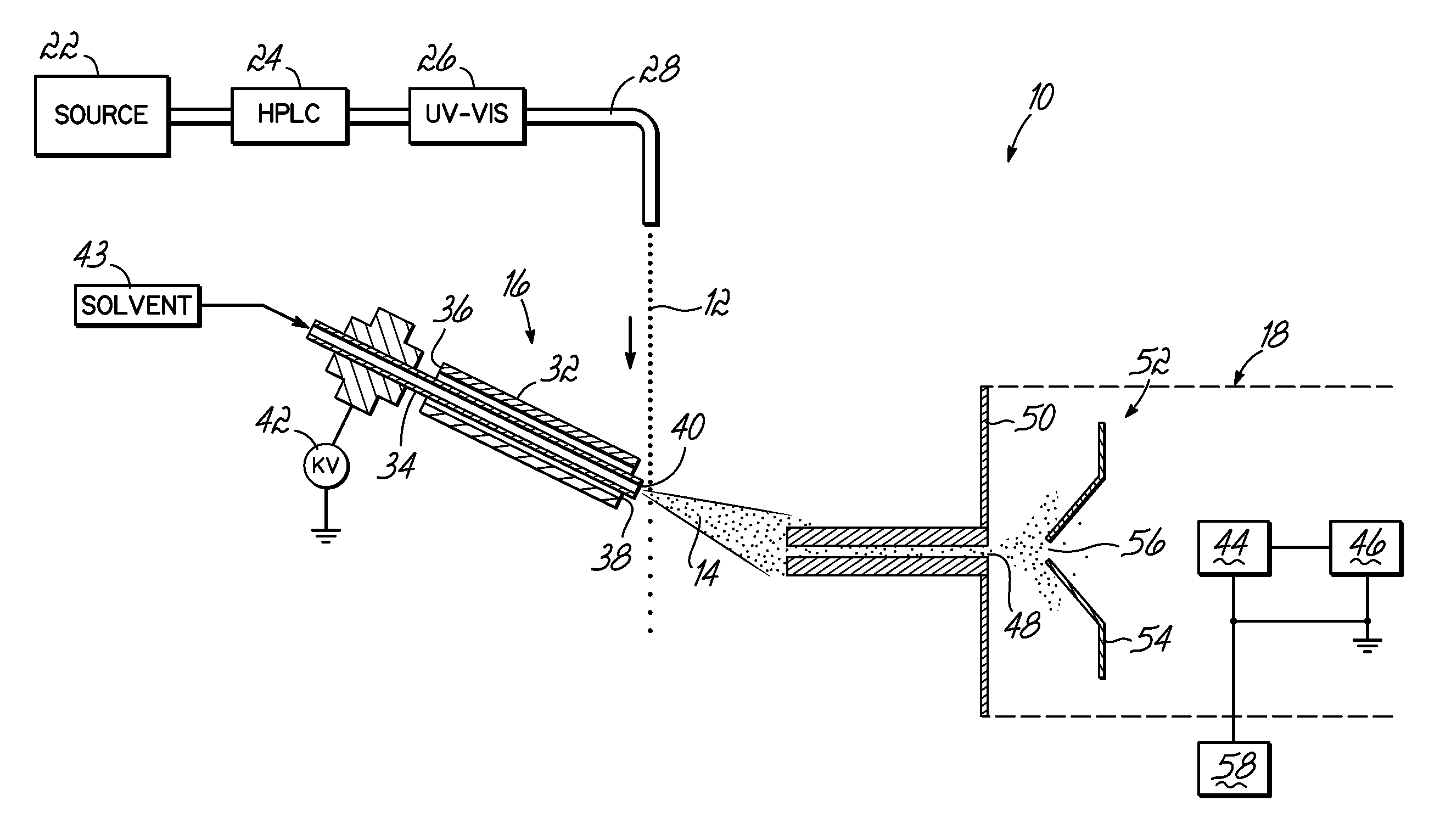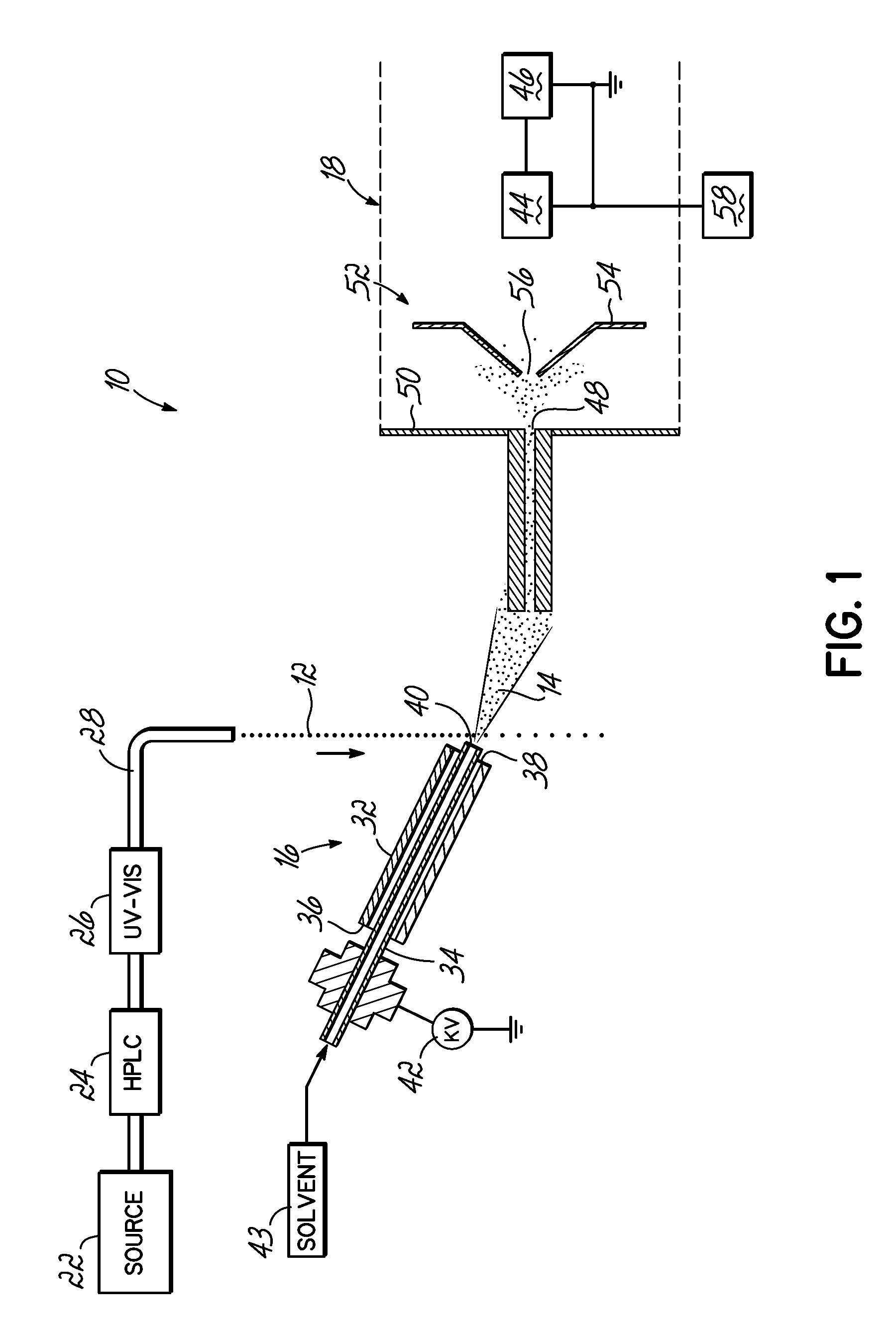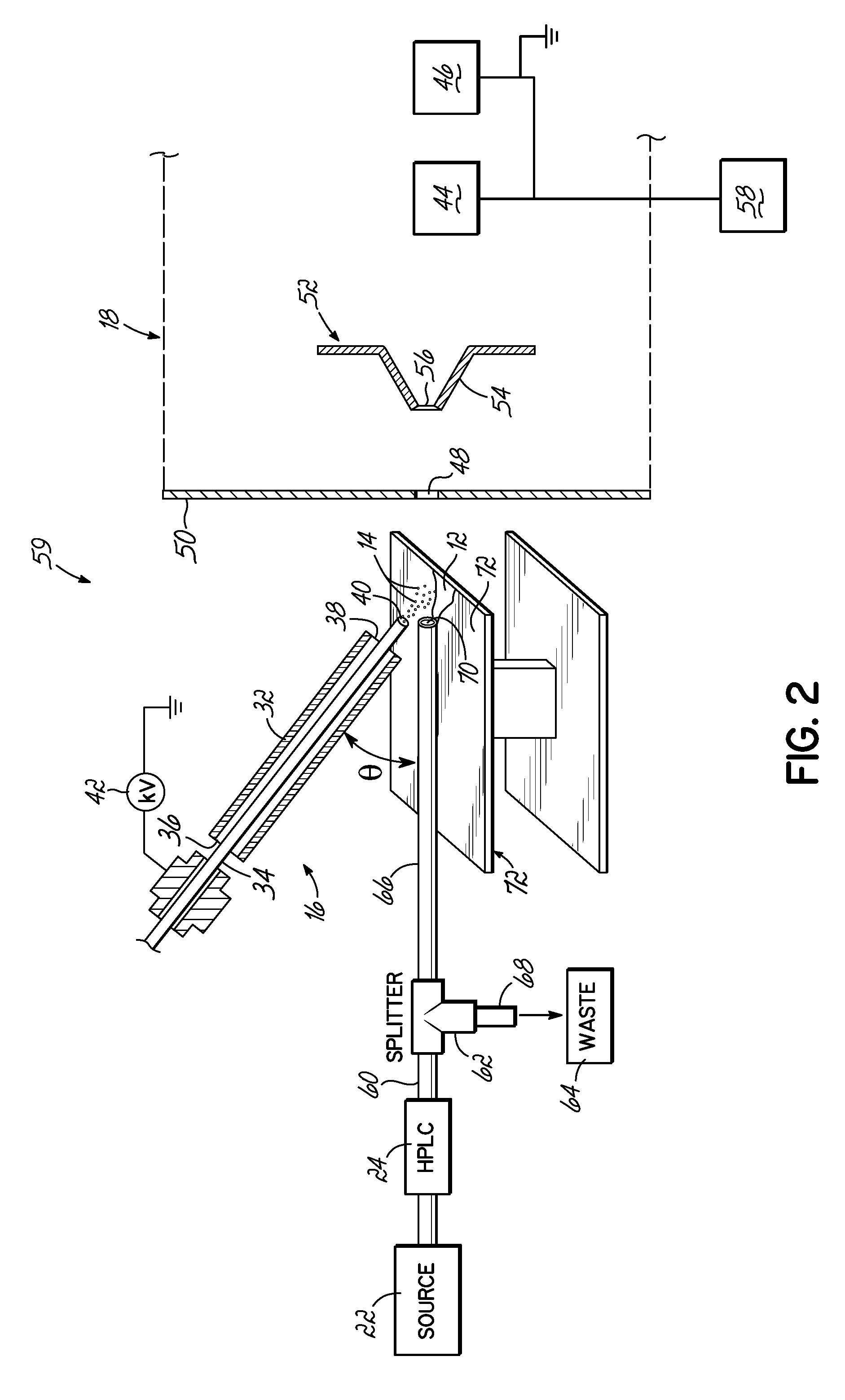Coupling of Liquid Chromatography with Mass Spectrometry by Liquid Sample Desorption Electrospray Ionization (DESI)
a liquid sample and mass spectrometry technology, applied in the field of appatii for coupling liquid chromatography with mass spectrometry by liquid sample, can solve the problems of high flow rate associated with some chromatography techniques, overwhelm the conventional ion source, and electrospray ionization,
- Summary
- Abstract
- Description
- Claims
- Application Information
AI Technical Summary
Benefits of technology
Problems solved by technology
Method used
Image
Examples
example 1
[0048]FIG. 5A illustrates an analytical system for demonstrating high sample flow rate DESI-MS that was similar to the embodiment of FIG. 1. More specifically, the system included a Thermo Finnigan LCQ DECA or DECA MAX ion trap mass spectrometer (San Jose, Calif.) and a Perkin Elmer HPLC system (Perkin Elmer, Shelton, Conn.) with an Agilent C18 column (250 mm×4.6 mm i.d.) The DESI spray voltage was set at +5 kV and the nebulizing gas (N2) pressure used was 170 psi. Unless specified otherwise, the DESI spray solvent was 1% acetic acid in acetonitrile or in methanol / water (1:1 by volume) and sprayed at 10 μL / min.
[0049]A sample comprising a 10 μL mixture consisting of three neurotransmitter compounds (3 mg / mL each), norepinephrine (“NE”), normetanephrine (“NM”), and dopamine (“DA”), underwent liquid chromatography separation using an isocratic elution with the mobile phase being 50 mM aqueous ammonium formate (pH 3.0 adjusted with formic acid), flowed through the UV-Vis (detection wave...
example 2
[0052]Post-column derivatization in LC / MS was demonstrated using an analytical system that is similar to the embodiment shown in FIG. 3. The sample was a neurotransmitter mixture with adopted selective boronic acid chemistry for derivatization. It is known that phenylboronic acid can selectively bind cis-diol to form a stable cyclic boronate via complexation reactions. In this study, 0.1 mM N-methyl-4-pyridineboronic acid iodide in acetonitrile was used as the DESI spray solution to provide a reagent ion of the positively charged N-methyl-4-pyridineboronic acid. The permanent charge carried by the reagent ion is helpful in enhancing the sensitivity of DESI-MS analysis. Operational conditions were similar to those of Example 1 but for including an ASI adjustable splitter to reduce the flow rate to 4.5 μL / min.
[0053]FIGS. 6A and 6C illustrate the product ions of m / z 271 and 255, arising from the complexation reactions of the reagent ions with NE and DA, respectively, via losses of two ...
example 3
[0054]LC / MS in conjunction with electrochemical conversion has unique applications in proteomics, such as in the fast structural eludication of disulfide-containing peptides via online electrochemical reduction. Conventionally, disulfide linkages increase the complexity for the protein / peptide structure elucidation by MS. Thus the cleavage of disulfide bonds is often essential as dissociation of a reduced protein / peptide ion can give rise to more structurally informative fragment ions than that of the intact counterpart.
[0055]Using an analytical system that is similar to the embodiment provided in FIG. 4, a disulfide-containing peptide somatostatin 1-14 (MW 1637.9 Da) was digested by trypsin to produce a peptide mixture: AGCK / TFTSC (this peptide has two chains of AGCK and TFTSC linked by a disulfide bond), and NFFWK, the sequences of each shown in FIG. 7A. This digest mixture was examined using the analytical system. The separation of the mixture was carried out using a gradient elu...
PUM
| Property | Measurement | Unit |
|---|---|---|
| flow rate | aaaaa | aaaaa |
| inner diameter | aaaaa | aaaaa |
| inner diameter | aaaaa | aaaaa |
Abstract
Description
Claims
Application Information
 Login to View More
Login to View More - R&D
- Intellectual Property
- Life Sciences
- Materials
- Tech Scout
- Unparalleled Data Quality
- Higher Quality Content
- 60% Fewer Hallucinations
Browse by: Latest US Patents, China's latest patents, Technical Efficacy Thesaurus, Application Domain, Technology Topic, Popular Technical Reports.
© 2025 PatSnap. All rights reserved.Legal|Privacy policy|Modern Slavery Act Transparency Statement|Sitemap|About US| Contact US: help@patsnap.com



